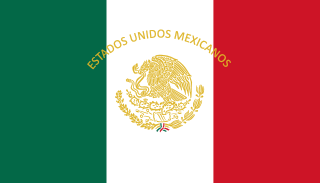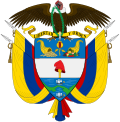
The vice president of the United States (VPOTUS) is the second-highest office in the executive branch of the U.S. federal government, after the president of the United States, and ranks first in the presidential line of succession. The vice president is also an officer in the legislative branch, as the president of the Senate. In this capacity, the vice president is empowered to preside over the United States Senate, but may not vote except to cast a tie-breaking vote. The vice president is indirectly elected at the same time as the president to a four-year term of office by the people of the United States through the Electoral College, but the electoral votes are cast separately for these two offices. Following the passage in 1967 of the Twenty-fifth Amendment to the US Constitution, a vacancy in the office of vice president may be filled by presidential nomination and confirmation by a majority vote in both houses of Congress.

The president pro tempore of the United States Senate is the second-highest-ranking official of the United States Senate, after the vice president. According to Article One, Section Three of the United States Constitution, the vice president of the United States is the president of the Senate, and the Senate must choose a president pro tempore to act in the vice president's absence.

The United States presidential line of succession is the order in which the vice president of the United States and other officers of the United States federal government assume the powers and duties of the U.S. presidency upon an elected president's death, resignation, removal from office, or incapacity.
A presidency is an administration or the executive, the collective administrative and governmental entity that exists around an office of president of a state or nation. Although often the executive branch of government, and often personified by a single elected person who holds the office of "president", in practice, the presidency includes a much larger collective of people, such as chiefs of staff, advisers and other bureaucrats. Although often led by a single person, presidencies can also be of a collective nature, such as the presidency of the European Union is held on a rotating basis by the various national governments of the member states. Alternatively, the term presidency can also be applied to the governing authority of some churches, and may even refer to the holder of a non-governmental office of president in a corporation, business, charity, university, etc. or the institutional arrangement around them. For example, "the presidency of the Red Cross refused to support his idea." Rules and support to discourage vicarious liability leading to unnecessary pressure and the early termination of term have not been clarified. These may not be as yet supported by state let initiatives. Contributory liability and fraud may be the two most common ways to become removed from term of office and/or to prevent re-election.

The president of Argentina is both head of state and head of government of Argentina. Under the national constitution, the president is also the chief executive of the federal government and commander-in-chief of the armed forces.

The President of Colombia is the head of state and head of government of the Republic of Colombia. The president heads the executive branch of the national government and is the commander-in-chief of the Military Forces of Colombia.

The president of Paraguay, officially known as the president of the Republic of Paraguay, is according to the Constitution of Paraguay the head of the executive branch of the government of Paraguay, both head of state and head of government. His honorific title is Su Excelencia.

The Vice President of the Philippines is the second-highest official in the executive branch of the Philippine government and is the first in the presidential line of succession. The vice president is directly elected by the citizens of the Philippines and is one of only two nationally elected executive officials, the other being the president.

The presidential line of succession defines who may become or act as President of the Federative Republic of Brazil upon the death, resignation, incapacity or removal from office of the elected president, and also when the president is out of the country or is suspended due to impeachment proceedings.

The vice president of Bolivia, officially known as the vice president of the Plurinational State of Bolivia, is the second highest political position in Bolivia. The vice president replaces the president in his definitive absence or others impediment and is the ex officio President of the Legislative Assembly.

The vice president of Colombia is the second-highest officer in the executive branch of the national government, after the president of Colombia, and ranks first in the presidential line of succession. The vice president is indirectly elected together with the president to a four-year term of office by the people of Colombia through the Popular Vote. Since the passage of the Article 102 Amendment to the Colombian Constitution, the vice president may also be appointed by the president to fill a vacancy, upon leave of absence or death, resignation, or removal of the president. Since the 1990s, the vice president has been afforded an official residence at the Vice Presidential House of Bogotá, D.C.
The constitutional history of Colombia is the process of formation and evolution of the different constitutions that Colombia has had since its formation.

José María Rojas Garrido was a Colombian Senator, and statesmen, who as the first Presidential Designate became Acting President of the United States of Colombia in 1866 during the absence of President elect Tomás Cipriano de Mosquera. He was a prominent journalist for several Liberal Party newspapers, and is considered one of the most important orators in Colombia's history.

The vice presidents of Honduras, officially the Designates to the Presidency, is the second highest political position in Honduras. According to the current constitution, the president and vice-presidents are elected in the same ticket. From 1957 to 2006 and from 2010 onwards there are positions of first, second, and third vice-president commonly known as the presidential designates.

The president of Mexico, officially the president of the United Mexican States, is the head of state and head of government of Mexico. Under the Constitution of Mexico, the president heads the executive branch of the federal government and is the commander in chief of the Mexican Armed Forces. The office, which was first established by the federal Constitution of 1824, is currently held by Claudia Sheinbaum, who was sworn-in on October 1, 2024. The office of the president is considered to be revolutionary, in the sense that the powers of office are derived from the Revolutionary Constitution of 1917. Another legacy of the Mexican Revolution is the Constitution's ban on re-election. Mexican presidents are limited to a single six-year term, called a sexenio. No one who has held the post, even on a caretaker basis, is allowed to run or serve again. The constitution and the office of the president closely follow the presidential system of government.
The Philippine presidential line of succession defines who becomes or acts as president upon the incapacity, death, resignation, or removal from office of a sitting president or a president-elect.
The Colombian presidential line of succession is the order which the vice president and other members of the Colombian national Government assume the powers and duties of the Colombian presidency upon an elected president's death in office, resignation, removal from office upon impeachment conviction or incapacity.
The Argentine presidential line of succession is the order in which officials may assume the office of the president of Argentina in the case of vacancy due to illness, death, resignation or impeachment.














